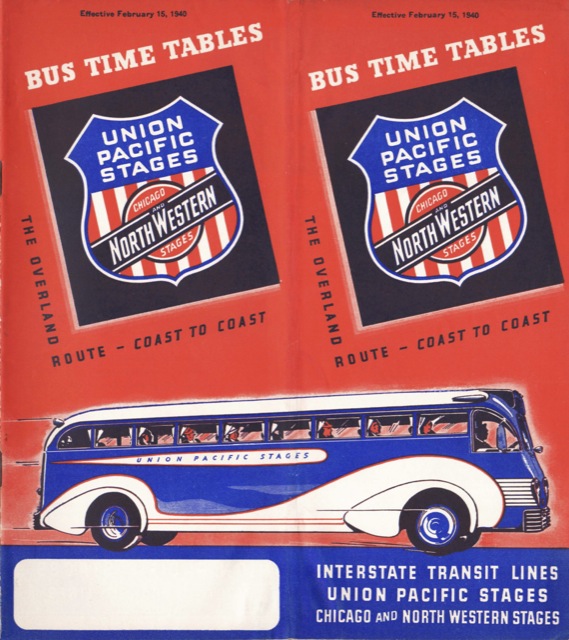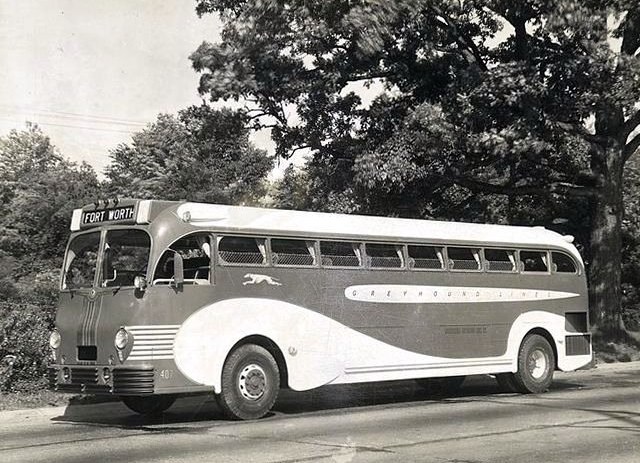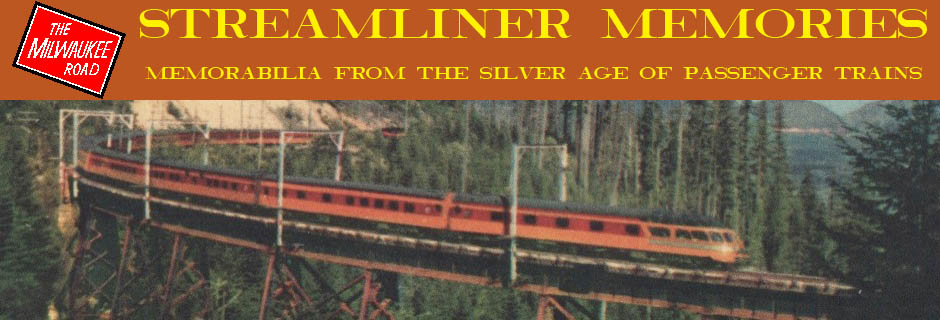The cover promises “coast to coast,” and the centerfold map shows a complex network of routes in all 48 states. But the timetables themselves reveal that Union Pacific Stages (and partner Interstate Transit Lines) basically follow the U.P. rail system. Four buses a day take just over 60 hours to connect Chicago with Los Angeles. While that’s not fast compared to the five-times-a-month streamliner, it is actually slightly faster than Union Pacific’s premiere daily train, the Los Angeles Limited.

Click image to download a 20.2-MB PDF of this 28-page timetable.
Three buses a day connecting Salt Lake with Portland make surprisingly poor connections with the Chicago-LA buses for anyone wishing to travel through. UP Stages also offered buses to Spokane, Sun Valley, and West Yellowstone. Among local routes are ten buses a day each way between Boise and Caldwell and seven a day each way between Portland and the Dalles.
Outside UP’s rail network, many of the routes shown on the centerfold map don’t have corresponding schedules in the timetable, and those that do are handled by other companies. Most of the schedules east of the Chicago are marked “Via Greyhound Lines.” Pacific Greyhound (then largely owned by Southern Pacific) handled Salt Lake to San Francisco service; North Coast Transportation (a successor to the Seattle-Everett Traction Company and later a part of Greyhound) offered 14 buses a day each way between Portland and Seattle.

The bus shown on the timetable cover is a 36-passenger model 719 from Yellow Coach, a subsidiary of General Motors. This bus revolutionized the bus industry in 1936 by putting passengers above a luggage deck (instead of tying luggage on the roof), the engine in the rear (instead of under a long hood), and incorporating unibody construction. I can’t find any photos of a Union Pacific model 719, but above is a Greyhound. The wave paint scheme was popular among many bus companies until replaced by stainless steel (which the bus industry called “silversides”) in the 1940s.

Although the windows were small, the 719 had comfortable reclining seats as shown in the photo above. Despite this, the railroad obviously didn’t believe that it would lose many long-distance customers to the buses that it ran in competition with its own trains. Instead, it seemed to see the buses as replacements for the local passenger trains that served small towns along its routes.
